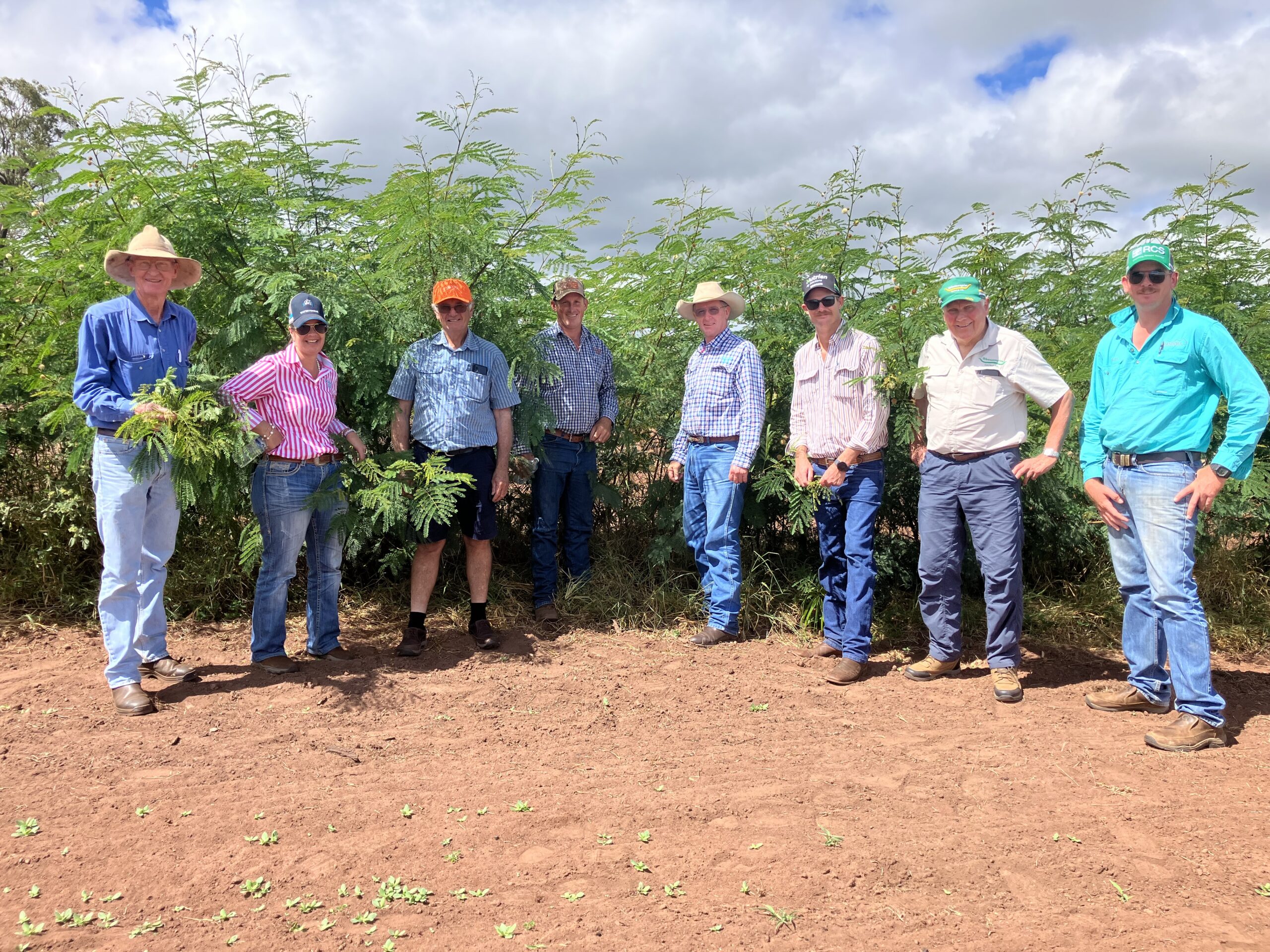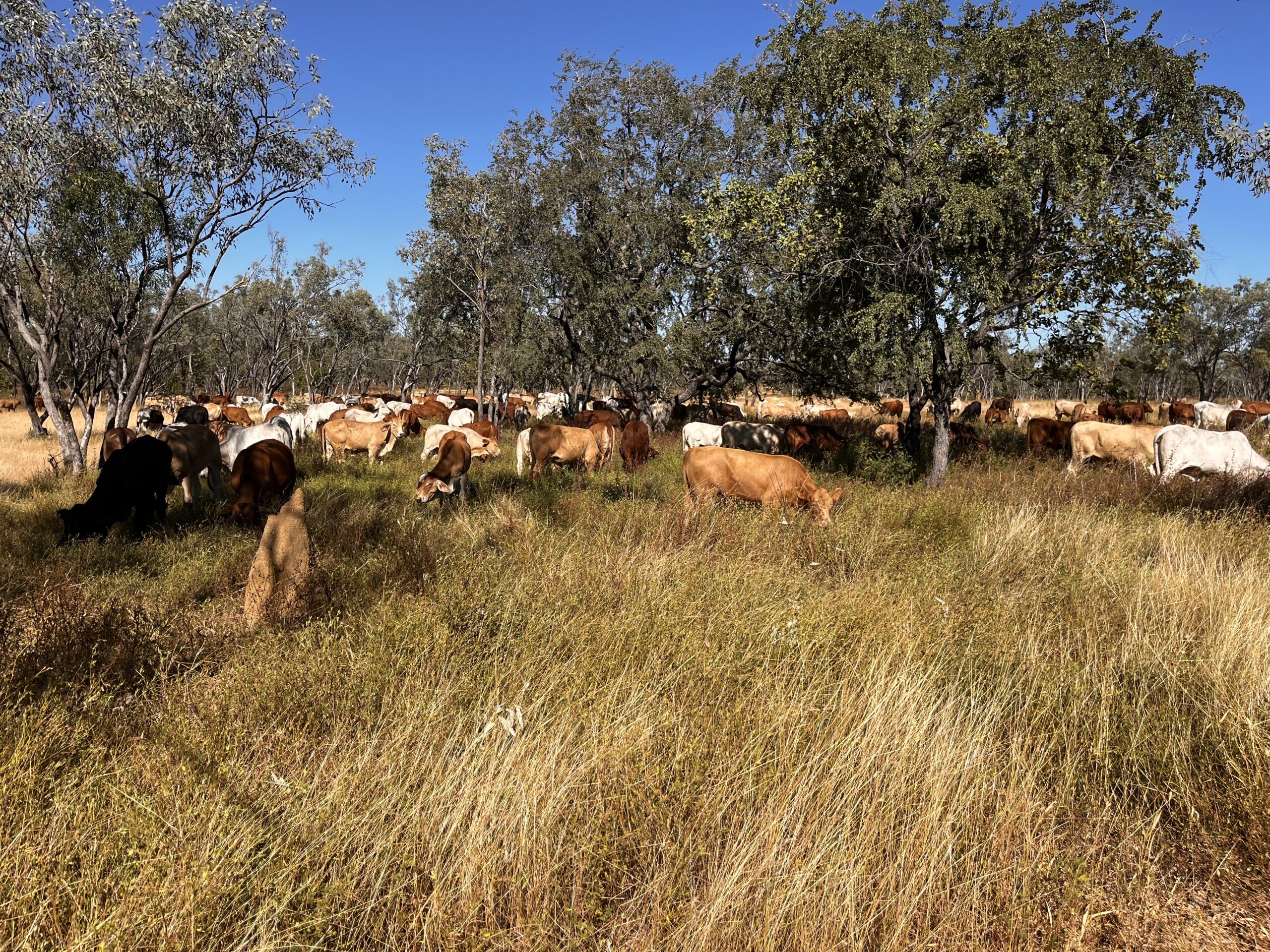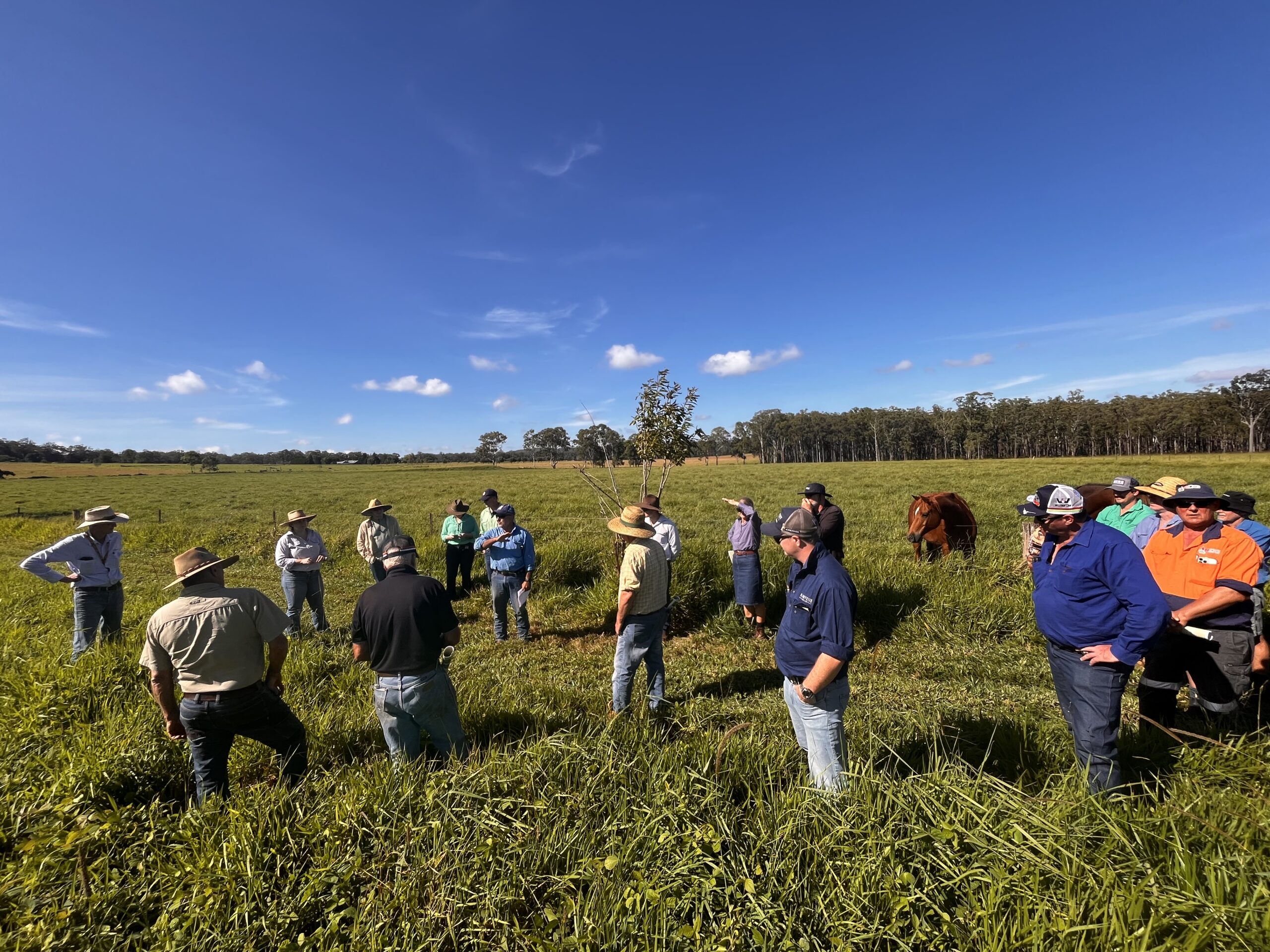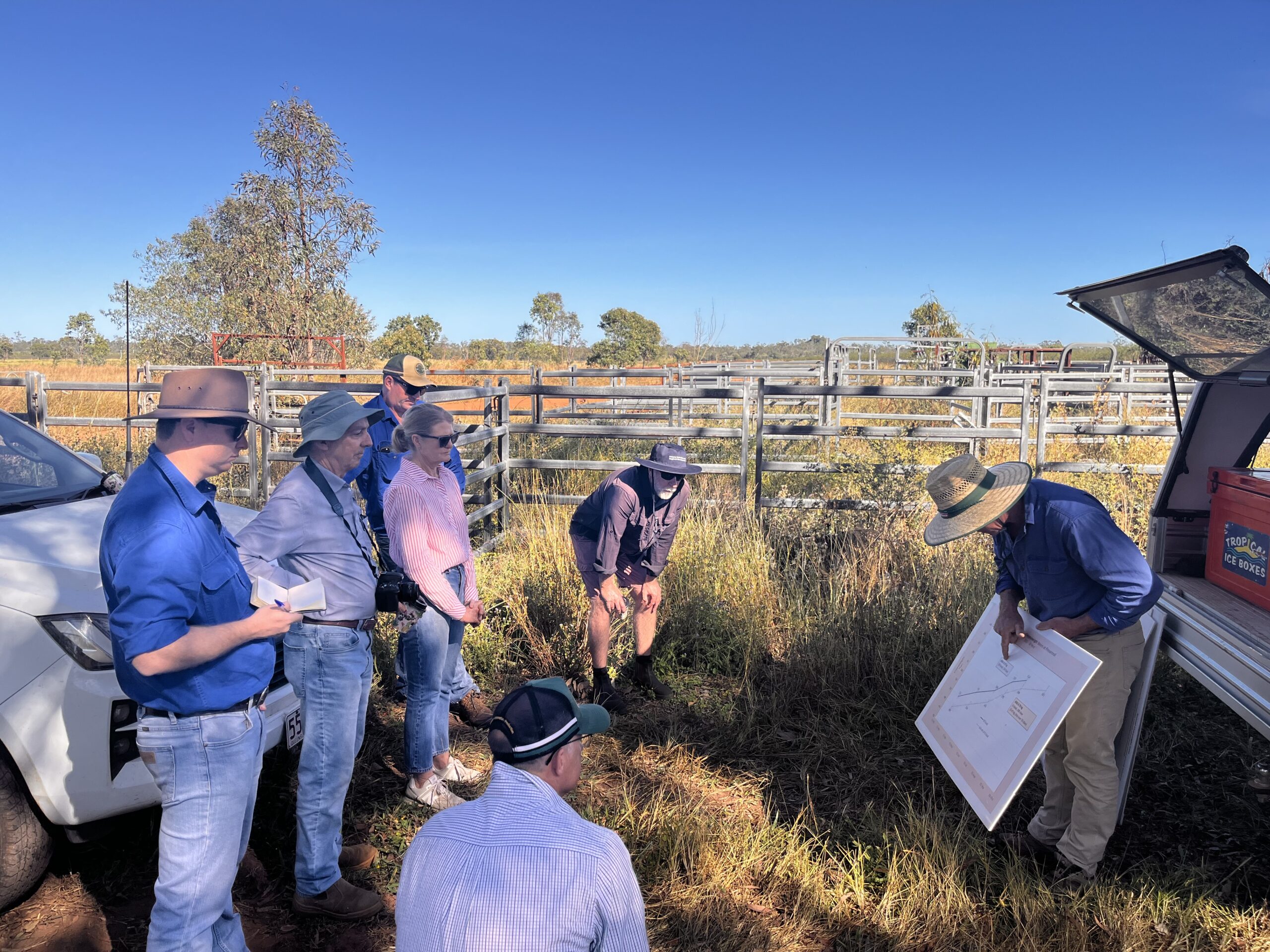Spreading the word across north Australia – interstate pastoral delegations visit north Qld to see how we do legumes
The Queensland Pasture Resilience Program‘s (QPRP) northern team recently hosted two groups of pastoralists and state government officials from Western Australia (WA) interested in how pasture legumes have been adopted in north Queensland. The groups visited producer properties and QPRP demonstration sites in the region. WA has significant restrictions on the introduction of non-native species to leasehold land, however permits have recently been granted for stylo establishment and irrigated leucaena in northern WA.
Over 13-14 March, representatives from the Kimberly Pilbara Cattlemen’s Association were shown leucaena on beef properties in the Bowen, Charters Towers and Mt Garnet districts, ably conducted by senior Beef Extension officer Bernie English. These sites covered a range of leucaena systems from flood irrigated high density planting, conventional row spacing under pivot irrigation and dryland leucaena with conventional and wide spaced rows.

Kendrick Cox and Craig Lemin hosted a separate group of government officers and land managers from WA and the Northern Territory during 13-16 May. This group visited beef properties in the Mt Surprise and Georgetown districts where past adoption of stylos has transformed productivity, particularly during the dry season months.
The first stop was Mont Albion near the historic tin-mining town of Irvinebank. Previous owners started sowing stylo (mainly Seca) over 30 years ago. They were possibly pioneers of ‘strip sowing’ using an old Massey Ferguson tractor to cultivate through the trees, spreading seed into the disturbed soil. Stylo is now widespread across the different landtypes of the property.
The group then travelled further west, through Almaden and on to Mt Surprise mostly through granite country where stylo can be found at any stop. This route included a late afternoon roadside stop at Bullock Creek Station where cows with calves at foot were grazing native pasture which was hayed off but well populated with leafy-green Seca, Verano and Townsville stylo. Bullock Creek was aerially sown with stylo in the early 2000s. Townsville stylo had previously been widespread, but was wiped out by anthracnose leading to the program of aerial spreading. In recent years, Townsville stylo appears to be making a comeback in this country and across the north more generally.
Next day the group went further west to the Goldfields (duplex) soils around Georgetown visiting Namuel and Mount Sullivan Stations owned by Kelvin and Kelly Bethel. An impressive mob of about 300 weaners were being tailed out. It was clear these animals were selectively grazing areas heavily populated with Seca and Amiga stylo.

At each stop, a short video presentation was recorded with producers and drone footage obtained for the benefit of graziers in WA who wanted to join the tour but were committed to mustering back at home.
On the return journey to the coast, the group saw the DPI/MLA (NQPRP) demonstration site at Whitewater Station, where stylo has been abundantly established in ‘strips’ during the 2024-25 wet-season. The site is a native woodland with fertile rocky basalt soils dominated by low quality invasive grasses (Indian couch and grader grass). Grazing trials are about to start at this site and the initial results have been summarised here.
The group also called in at the Pinnarendi Station leucaena trial to see newly sown improved pasture amongst widened leucaena rows. The tour concluded on the Atherton Tablelands with visits to properties where legumes had been maintained in highly productive pastures for over 25 years, and the group joined a scheduled neighbour day showcasing legumes which had recently been established into highly competitive improved pasture.



The tours were greatly enjoyed by all and enabled excellent practical discussion with producers and researchers sharing similar challenges in different parts of northern Australia. The touring producer groups will use their new knowledge to progress legume adoption in their respective states. The videos developed by the group will be shared with the QPRP team for the benefit of Queensland producers.
This work is supported through the Queensland Pasture Resilience Program which is a partnership between the Department of Primary Industries, Meat & Livestock Australia and the Australian Government through the MLA Donor Company.